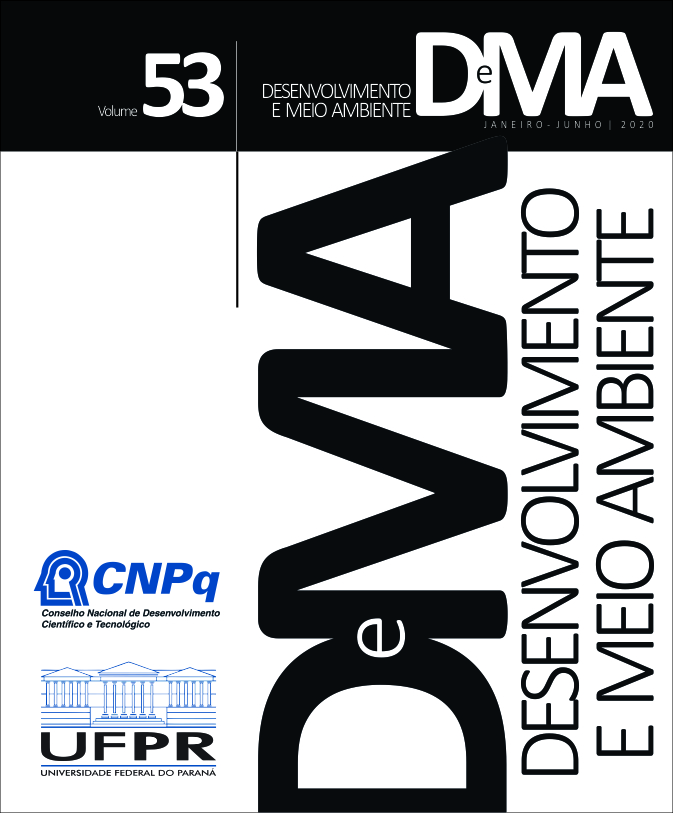Greenhouse gas emissions due to land use change in Brazil from 1990 to 2015: comparison of methodological approaches
DOI:
https://doi.org/10.5380/dma.v53i0.68494Palavras-chave:
biomes, carbon stock, forest conversion, deforestation, greenhouse gasesResumo
Net CO2 emissions due to land-use change (LUC) resulting from the conversion of natural forest vegetation in Brazil were analyzed over 25 years (1990-2015). Recognized data sources were studied and emission values were compared. Our analysis included LUC emissions over time, which were stratified by biome. In addition, implications for the fulfillment of commitments assumed by Brazil in the Paris Agreement were discussed. Net LUC greenhouse gas (GHG) emissions from 1990 to 2015 totaled 26GtCO2eq. These values were published and updated officially on the National Emissions Registration System. Another renowned source of information regarding Brazil’s GHG emissions is the System for Greenhouse Gas Emissions and Removals Estimates, which is managed by the Climate Observatory. Although this platform uses a different methodology, it displayed total values that were very similar to the official estimates, except for some differences between individual biome emissions. The Food and Agriculture Organization Corporate Statistical Database, which is based on reports of forest resources, reported lower values of about 21GtCO2eq, thereby showing significant differences among biomes when compared to the two aforementioned sources. Amazonia was responsible for 65% to 80% of all emissions domestic during the studied period. Considering these reductions and the commitments assumed by Brazil (43% reduction in emissions by 2030), the country is expected to reach its goal and contribute to the Paris Agreement. All three analyzed data sources reported estimates for CO2emissions with differences of up to 18%. The Amazon biome contributed the most to emissions over the studied period, regardless of the source. All analyzed reports displayed reductions in LUC CO2 emissions in Brazil for the last few years of analysis. These results indicate the possibility of Brazil fulfilling the commitments established by the Paris Agreement. The main differences among the methodologies analyzed are due to the vegetation cover mapping approaches.
Downloads
Publicado
Como Citar
Edição
Seção
Licença
Os Direitos Autorais sobre trabalhos publicados nesta revista são do autor, com direitos de primeira publicação para a revista. O conteúdo dos trabalhos publicados é de inteira responsabilidade dos autores. A DMA é um periódico de acesso aberto (open access), e adota a licença Creative Commons Atribuição 4.0 Não Adaptada (CC-BY), desde janeiro de 2023. Portanto, ao serem publicados por esta Revista, os artigos são de livre uso para compartilhar (copiar e redistribuir o material em qualquer suporte ou formato para qualquer fim, mesmo que comercial) e adaptar (remixar, transformar, e criar a partir do material para qualquer fim, mesmo que comercial). É preciso dar o crédito apropriado, prover um link para a licença e indicar se mudanças foram feitas.
Os conteúdos publicados pela DMA do v. 53 de 2020 ao v. 60 de 2022 são protegidos pela licença Creative Commons Atribuição – Não Comercial – Sem Derivações 4.0 Internacional.
A DMA é uma revista de acesso aberto desde a sua criação, entretanto, do v.1 de 2000 ao v. 52 de 2019, o periódico não adotava uma licença Creative Commons e, portanto, o tipo de licença não é indicado na página inicial dos artigos.




